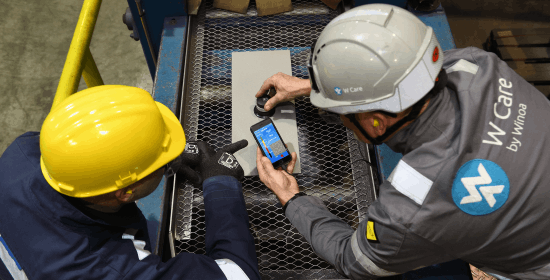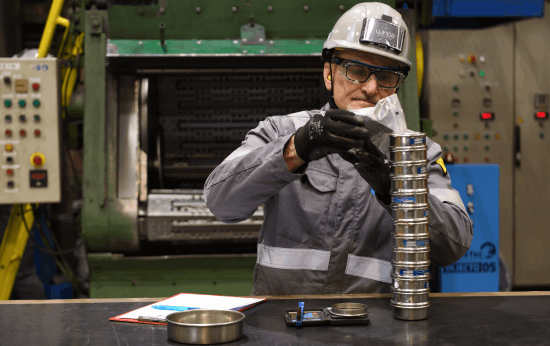Surface Cleaning Process
Surface cleaning is a key step in preparing materials for further processing. The process involves removing dirt, rust, scale and other unwanted layers from the surface of metal and other materials. Various types of abrasive materials are used for effective and thorough cleaning. These abrasives vary in properties and are selected based on specific application requirements such as material type, degree of contamination and desired surface finish.
Suitable Abrasives for Surface Cleaning
Desanding (Removal of sand residues and dirt)
- Hybrid Shot: combines the properties of different types of steel granules, ensuring high efficiency and uniform results in removing sand residues.
- HPG (High Performance Grit): A high performance abrasive that provides fast and effective cleaning due to its hardness and sharpness. Ideal for removing hard layers of dirt.
- Steel Shot (S330 - S660): steel shot available in a variety of sizes, suitable for a wide range of applications from light to heavy surface cleaning.
Descaling (Descaling and Rust Removal)
- Steel Grit: Ideal for heavy duty descaling and rust removal. The hard and sharp grit provides effective surface cleaning.
- Stainium: A premium abrasive that provides high performance and durability. Suitable for heavy duty descaling and rust removal applications.
- Stelux C: Surface friendly stainless steel abrasive, provides high quality cleaning without contaminating stainless steel materials.
- Stelux CN: Combines the properties of hardness and durability, ideal for demanding applications.
- Stelux CG: Stainless steel abrasive providing excellent cleaning results and minimising the risk of surface damage.
Comparison of Surface Cleaning Products
| Hybrid Shot | HPG | Steel Shot (S330 - S660) | Steel Grit | Stainium | Stelux C | Stelux CN | Stelux CG | |
|---|---|---|---|---|---|---|---|---|
| Steel | High Carbon Steel Grit | Steel | Steel | Steel | Stainless Steel | Stainless Steel | Stainless Steel | |
| Primary Use | General surface cleaning, foundry applications | High-precision surface cleaning and preparation | Surface cleaning, shot peening | Surface preparation, cleaning, and finishing | Cleaning, scale removal, finishing, and surface preparation | Cleaning and finishing stainless steel and non-ferrous metals | Cleaning and finishing stainless steel and non-ferrous metals | Cleaning and finishing stainless steel and non-ferrous metals |
| Hardness (HRC) | 40-50 | 48-52 | 46-51 | 48-52 | 46-52 | New 33-39, hardens to 49-55 with use | New 27-33, hardens to 45-51 with use | 55-61 |
| Durability | Very High | Very High | High | High | Very High | High | High | High |
| Recyclability | ||||||||
| Specific Applications | Suitable for general blasting and surface preparation to reduce overall costs | Special foundry applications | Commonly used for surface cleaning in foundries and for shot peening to increase fatigue resistance | Used in applications where a rougher surface profile is needed | Used in applications requiring intensive cleaning and finishing of metallic materials | Used in applications where minimal contamination risk is required (stainless and non-ferrous materials) | Used in applications requiring the exclusion of contamination risk in stainless or non-ferrous materials | Used for cleaning and surface preparation (roughening) of stainless and non-ferrous materials with minimal contamination risk |
| Shape | Mixture of grit and shot | Grit | Shot | Grit | Mixture | Shot | Shot | Grit |
Surface Cleanliness Inspection Tools
To ensure the quality and efficiency of surface cleaning, it is essential to use cleanliness inspection tools. One of these tools is WA Clean.
WA Clean: This tool is used to measure the cleanliness of surfaces after abrasive cleaning. It provides an accurate and quick assessment that aids in quality control and ensures that surfaces are ready for further processing without unwanted residues or contaminants.




Working Mixture Analysis Tools
For optimal abrasive cleaning performance, it is important to regularly analyze the working mixture. The WAMO Granulometric Kit is ideal for this purpose.
The WAMO Granulometric Kit: this tool enables precise analysis of the granulometric composition of the working mixture. It helps to ensure the optimum ratio and size of abrasives, resulting in more efficient and consistent surface cleaning.


